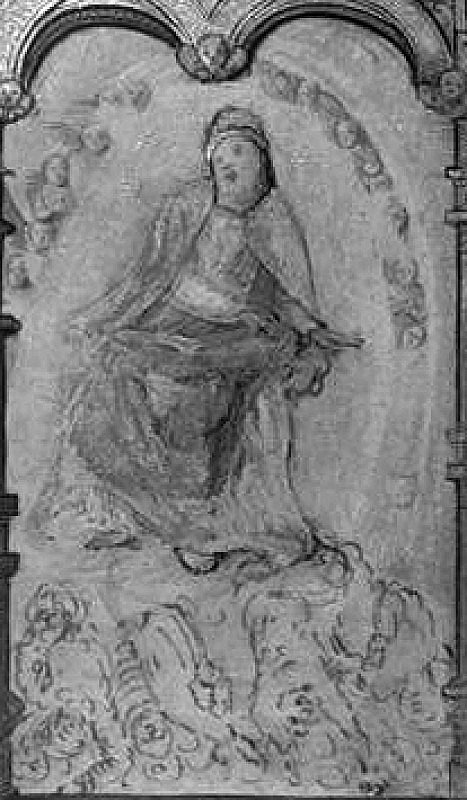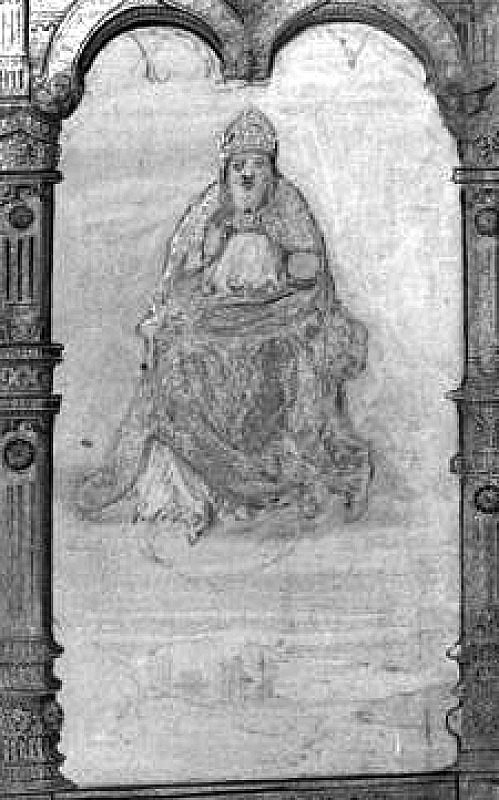Underdrawing
Artists' Techniques
Preparatory drawings, loosely painted with a liquid medium (i.e. brush and ink), are present on most pages.
Architectural features as well as the outlines, faces and clothes of the figures were roughly sketched. Sketches were not always followed closely at the painting stage, as is especially apparent in drapery folds.
The naked bodies of Adam and Eve were carefully drawn, particularly the figure of Adam in the bottom left image on fol. 4r.
A straight line running between or just above the eyes was often drawn to help position them within the face – this is most evident in the figures of the young Virgin Mary and St Anne on fol. 9r.
Select the ‘infrared’ layer when viewing each of the folios on the right to see the underdrawings.



God creating Heaven and Earth; God creating Angels; God creating animals and birds
The rectangular panel in the upper border above the text block shows the Arma Christi, the Instruments of Christ’s Passion (pincers, hammer, cross with crown of thorns, nails, lanterns, scourges, dice, whips, column with ropes, ladder, and rooster). It was customary for children to make the sign of the cross and to say the words In nomine Patris, et Filii, et Spiritus Sancti, Amen (‘In the name of the Father, and Son, and Holy Spirit, Amen’) before reciting their ABCs. Here, the cross of the Arma Christi extends into the text block, just before the A of the alphabet, to prompt Claude to perform this devotion.
The large brush strokes in the azurite blue sky of the upper right scene hide a pentimento, invisible even in the near-infrared image because azurite still absorbs light at these wavelengths (800-1000 nm). Infrared reflectography, however, reveals the presence of small pointed arches, and the different shape of the clouds below God the Father’s feet (hotspot 3).
